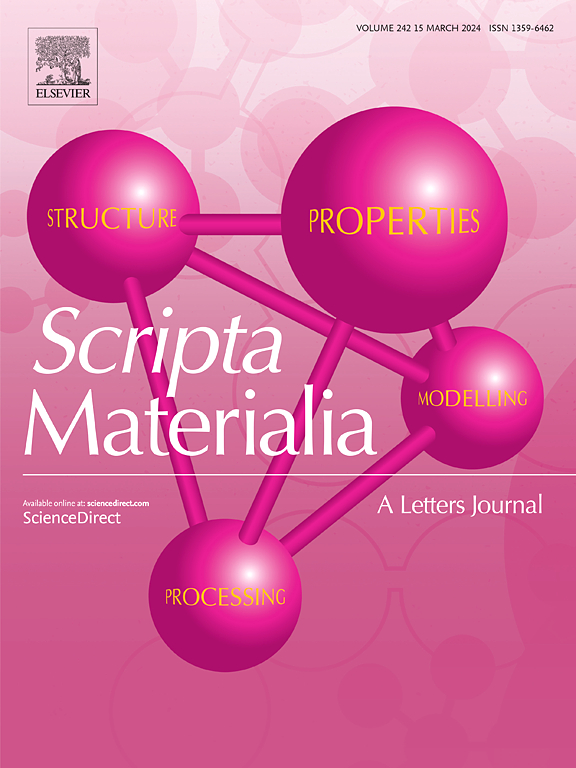BCC-B2高温合金的相变途径
IF 5.3
2区 材料科学
Q2 MATERIALS SCIENCE, MULTIDISCIPLINARY
引用次数: 0
摘要
高温材料的发展需要对控制微观结构稳定性和力学性能的相变有深刻的理解。BCC+B2高温合金受ni基高温合金中γ/γ′组织的启发,具有延展性的BCC基体和一致的B2析出物,提高了高温强度和抗蠕变性能。本文研究了铁素体和难熔高温合金中BCC+B2组织形成的热力学和相变途径。它们的稳定性取决于混相间隙、晶格失配、弹性模量对比和位置占用。铁素体高温合金(fe - al基)适用于低于1000°C的应用,而耐火高温合金适用于极端温度(1300°C - 1800°C)。然而,在相稳定性、抗氧化性和蠕变性能方面仍然存在挑战。讨论了通过热处理、相场建模和基于calphad的设计来控制微观结构的策略。增强这些方面将优化用于航空航天、能源和国防应用的BCC+B2高温合金,为极端环境设计的下一代材料提供途径。本文章由计算机程序翻译,如有差异,请以英文原文为准。
Phase transformation pathways in BCC-B2 superalloys
The development of high-temperature materials requires a deep understanding of phase transformations governing microstructural stability and mechanical properties. BCC+B2 superalloys, inspired by the γ/γ′ microstructure in Ni-based superalloys, feature a ductile BCC matrix with coherent B2 precipitates that enhance high-temperature strength and creep resistance. This article examines the thermodynamics and phase transformation pathways leading to BCC+B2 microstructures in ferritic and refractory superalloys. Their stability depends on miscibility gaps, lattice misfit, elastic modulus contrast, and site occupancies. Ferritic superalloys (Fe-Al-based) are suited for applications below 1000 °C, while refractory superalloys target extreme temperatures (1300 °C–1800 °C). However, challenges remain in phase stability, oxidation resistance, and creep performance. Strategies for microstructural control through heat treatment, phase-field modeling, and CALPHAD-based design are discussed. Enhancing these aspects will optimize BCC+B2 superalloys for aerospace, energy, and defense applications, providing a pathway for next-generation materials designed for extreme environments.
求助全文
通过发布文献求助,成功后即可免费获取论文全文。
去求助
来源期刊

Scripta Materialia
工程技术-材料科学:综合
CiteScore
11.40
自引率
5.00%
发文量
581
审稿时长
34 days
期刊介绍:
Scripta Materialia is a LETTERS journal of Acta Materialia, providing a forum for the rapid publication of short communications on the relationship between the structure and the properties of inorganic materials. The emphasis is on originality rather than incremental research. Short reports on the development of materials with novel or substantially improved properties are also welcomed. Emphasis is on either the functional or mechanical behavior of metals, ceramics and semiconductors at all length scales.
 求助内容:
求助内容: 应助结果提醒方式:
应助结果提醒方式:


